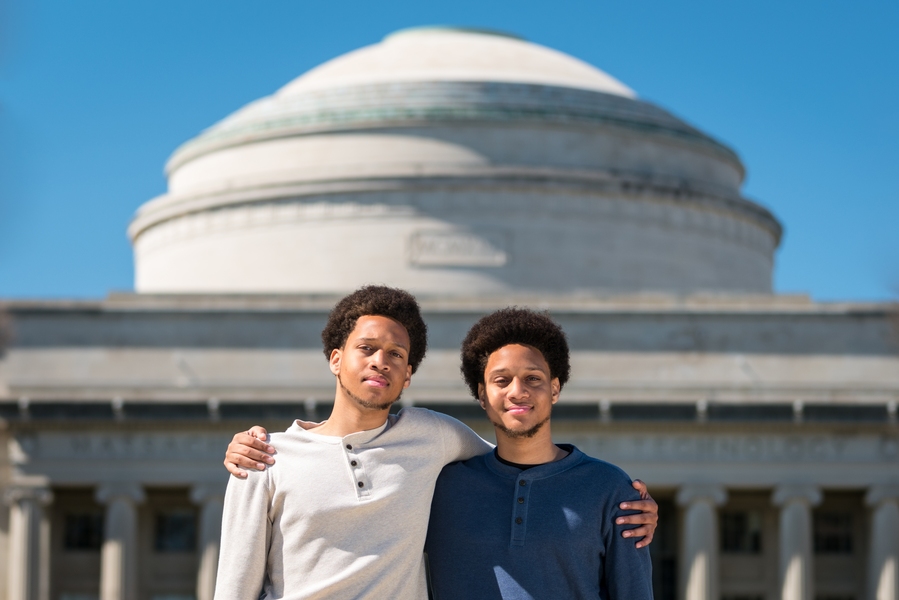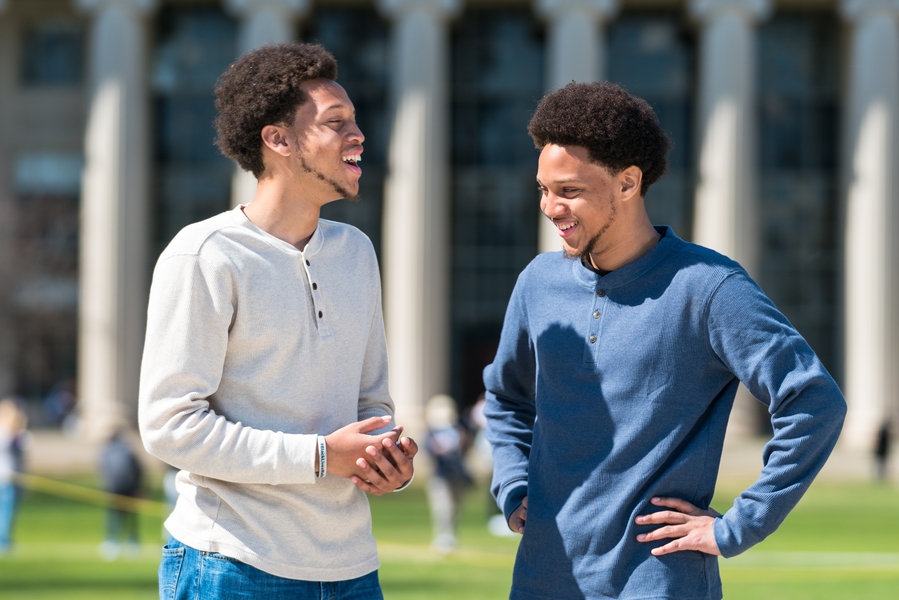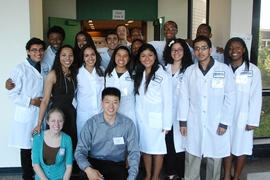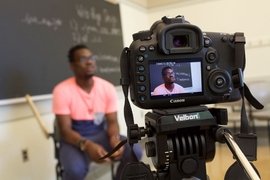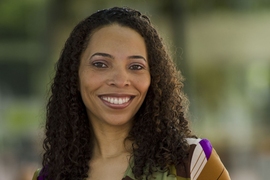Shared DNA aside, the George twins have a lot in common. They play the same sport (doubles tennis, naturally), have the same favorite extracurricular activity (quiz bowl club), and are passionate about science (particularly, and fittingly, genetics).
This fall, the recent high school graduates and co-valedictorians from Woodbridge, New Jersey, will begin a new shared experience: attending MIT, their “dream” school.
The brothers got a taste of MIT in 2017, through the Office of Engineering Outreach Programs (OEOP), which offers enrichment programs to middle and high school students, many of whom are underrepresented or underserved. Offered free of charge, the programs aim to encourage and prepare promising students from around the country for a future in science, technology, engineering, and mathematics (STEM).
Joining a like-minded community
Malik participated in Minority Introduction to Engineering and Science (MITES), a six-week summer residential program founded in 1975. Each year, about 70 to 80 rising high school seniors study calculus, physics, life sciences, and humanities, plus one elective, and take part in college admissions counseling, lab tours, and events in the Boston area. Malik chose the genomics elective and gained valuable research experience in bacterial genetics at the Broad Institute.
Miles joined the MIT Online Science, Technology, and Engineering Community program (MOSTEC), also for rising high school seniors, which runs from June through December every year. Throughout the summer, the students complete online coursework and projects in topics such as combinatorics, machine, learning, neuroscience, electronics, and science writing, culminating in presentations at a five-day conference on campus in August.
In the case of both programs, the twins say, becoming part of a like-minded community was especially impactful.
“Getting to meet underrepresented and minority students from across the country that all have an interest in STEM was a very big eye-opener, as our high school is predominantly white,” Malik says. “It was a great bonding experience for all of us.”
In fact, instead of living together this fall, each of them will room with a student they met through OEOP. Moreover, given a spate of recent social media posts and news stories, the two will arrive with a bit of notoriety.
Both Malik and Miles, who are fraternal twins, plan to study bioengineering at MIT, although they recognize that may change. “We think that’s a good fit for us,” Malik says, adding that it’s an exciting time in the field, with the recent development CRISPR and new gene editing techniques. He’s interested in finding remedies for genetic conditions such as Alzheimer’s disease and bipolar disorder.
For his part, Miles wants focus on genetically modified organisms (GMOs). “I do think GMOs are the next step in helping the world,” he says.
Whatever academic path the brothers pursue, MIT’s Eboney Hearn ’01, executive director of OEOP, will be on the sidelines, cheering them on.
“I’m so excited that they are both coming to MIT, and I look forward to continuing to see them become bang-up scientists and engineers and supporting them along the way,” she says. Then she pauses, and adds, chuckling, “They’re going to be a dynamic duo, totally.”
Ambassadors of STEM
The twins are just a set of hundreds of inspiring examples of how OEOP is working to diversify the ranks of future engineers and scientists. In this year’s cohort of over 200 MITES and MOSTEC participants, 81 percent are underrepresented minorities, 67 percent are from disadvantaged socioeconomic backgrounds, 50 percent are female, and 60 percent would be the first in their family to go to college.
Additional qualitative and quantitative metrics, including college matriculation and graduation rates, choice of major, self-efficacy, and other data, clearly indicate OEOP’s impact on the 4,100 students it has served to date.
In the past decade, nearly 80 percent of participants have gone on to pursue STEM degrees. Among all OEOP alumni, the six-year graduation rate is 89 percent, compared to the national average of 59.3 percent. Each year, many participants go on to MIT and other top schools such as Harvard University, Stanford University, Cornell University, Georgia Tech, and Princeton University.
Although harder to quantify, the enhanced confidence and sense of community that OEOP students gain are the two most prominent themes Hearn hears from program alumni, again and again. These outcomes are natural byproducts of successfully managing intensely rigorous academic programs while meeting peers and mentors with similar backgrounds and interests.
“Students come here and they leave changed,” Hearn says.
One aspect of OEOP, the “special sauce,” according to Hearn, is that many of the teaching assistants (TAs) are former participants who are now attending MIT or other selective schools.
“They really believe in you, so it’s a big confidence boost,” Malik says.
“It’s really powerful,” Hearn explains, “because you have these individuals who are near-peers that are mentors and role models who can — and do — tell the students, ‘I was sitting in your seat two summers ago, and I had a lot of doubts about whether I could do this. I come from a similar family background, or school situation, and now I’m here at Brown, or Harvard, or MIT. And you can do it, too.’”
